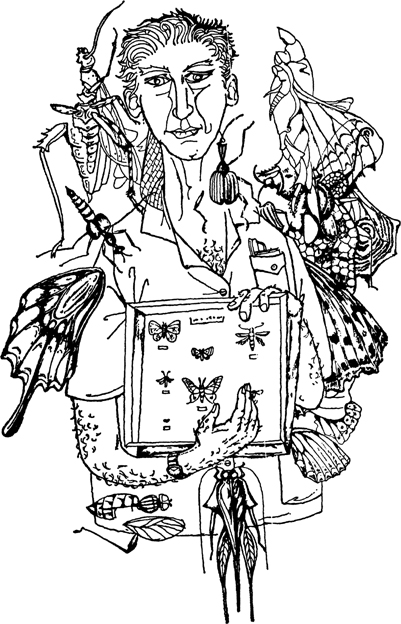Kobo Abe - The Woman in the Dunes
Here you can read online Kobo Abe - The Woman in the Dunes full text of the book (entire story) in english for free. Download pdf and epub, get meaning, cover and reviews about this ebook. year: 2011, publisher: Vintage, genre: Detective and thriller. Description of the work, (preface) as well as reviews are available. Best literature library LitArk.com created for fans of good reading and offers a wide selection of genres:
Romance novel
Science fiction
Adventure
Detective
Science
History
Home and family
Prose
Art
Politics
Computer
Non-fiction
Religion
Business
Children
Humor
Choose a favorite category and find really read worthwhile books. Enjoy immersion in the world of imagination, feel the emotions of the characters or learn something new for yourself, make an fascinating discovery.

- Book:The Woman in the Dunes
- Author:
- Publisher:Vintage
- Genre:
- Year:2011
- Rating:5 / 5
- Favourites:Add to favourites
- Your mark:
- 100
- 1
- 2
- 3
- 4
- 5
The Woman in the Dunes: summary, description and annotation
We offer to read an annotation, description, summary or preface (depends on what the author of the book "The Woman in the Dunes" wrote himself). If you haven't found the necessary information about the book — write in the comments, we will try to find it.
The Woman in the Dunes — read online for free the complete book (whole text) full work
Below is the text of the book, divided by pages. System saving the place of the last page read, allows you to conveniently read the book "The Woman in the Dunes" online for free, without having to search again every time where you left off. Put a bookmark, and you can go to the page where you finished reading at any time.
Font size:
Interval:
Bookmark:



First Vintage International Edition, April 1991
Copyright 1964 by Alfred A. Knopf, Inc.
All rights reserved under International and Pan-American
Copyright Conventions. Published in the United States by Vintage Books, a division of Random House, Inc., New York, and simultaneously in Canada by Random House of Canada Limited, Toronto. Originally published in Japanese by Shinchosha as Suna no Onna. First published in the United States by Alfred A. Knopf, Inc., New York, in 1964.
Library of Congress Cataloging in Publication
Data Abe, Kobo, 1924
The woman in the dunes.
Translation of Suna no onna.
I. Title.
[PZ4.A13Wo 5] [PL845.B4] 895.635
eISBN: 978-0-307-81373-2 9050625
v3.1
W ITHOUT THE THREAT
OF PUNISHMENT
THERE IS NO JOY
IN FLIGHT



O NE day in August a man disappeared. He had simply set out for the seashore on a holiday, scarcely half a day away by train, and nothing more was ever heard of him. Investigation by the police and inquiries in the newspapers had both proved fruitless.
Of course, missing persons are not really uncommon. According to the statistics, several hundred disappearances are reported every year. Moreover, the proportion of those found again is unexpectedly small. Murders or accidents always leave some clear piece of evidence, and the motives for kidnapping are normally ascertainable. But if the instance does not come under some such heading, cluesand this is especially true in the case of missing personsare extremely difficult to come by. Many disappearances, for example, may be described as simple escape.
In the case of this man, also, the clues were negligible. Though his general destination was known, there had been no report from the area that a body had been discovered. By its very nature, it was inconceivable that his work involved some secret for which he might have been abducted. His quite normal behavior had not given the slightest hint that he intended to vanish.
Naturally, everyone at first imagined that a woman was involved. But his wife, or at least the woman he lived with, announced that the object of his trip had been to collect insect specimens. The police investigators and his colleagues felt vaguely disappointed. The insect bottle and net were hardly a feint for a runaway trip with a girl. Then, too, a station employee at S had remembered a man getting off the train who looked like a mountain climber and carried slung across his shoulders a canteen and a wooden box, which he took to be a painting set. The man had been alone, quite alone, the employee said, so speculation about a girl was groundless.
The theory had been advanced that the man, tired of life, had committed suicide. One of his colleagues, who was an amateur psychoanalyst, held to this view. He claimed that in a grown man enthusiasm for such a useless pastime as collecting insects was evidence enough of a mental quirk. Even in children, unusual preoccupation with insect collecting frequently indicates an Oedipus complex. In order to compensate for his unsatisfied desires, the child enjoys sticking pins into insects, which he need never fear will escape. And the fact that he does not leave off once he has grown up is quite definitely a sign that the condition has become worse. Thus it is far from accidental that entomologists frequently have an acute desire for acquisitions and that they are extremely reclusive, kleptomaniac, homosexual. From this point to suicide out of weariness with the world is but a step. As a matter of fact, there are even some collectors who are attracted by the potassium cyanide in their bottles rather than by the collecting itself, and no matter how they try they are quite incapable of washing their hands of the business. Indeed, the man had not once confided his interests to anyone, and this would seem to be proof that he realized they were rather dubious.

Yet, since no body had actually been discovered, all of these ingenious speculations were groundless.
Seven years had passed without anyone learning the truth, and so, in compliance with Section 30 of the civil code, the man had been pronounced dead.

O NE August afternoon a man stood in the railroad station at S. He wore a gray peaked hat, and the cuffs of his trousers were tucked into his stockings. A canteen and a large wooden box were slung over his shoulders. He seemed about to set out on a mountain-climbing expedition.
Yet there were no mountains worth climbing in the immediate vicinity. Indeed, the guard who took his ticket at the gate looked at him quizzically after he passed through. The man showed no hesitancy as he entered the bus standing in front of the station and took a seat in the back. The bus route led away from the mountains.
The man stayed on the bus to the end of the run. When he got off, the landscape was a mixture of hillocks and hollows. The lowlands were rice paddies that had been divided into narrow strips, while among them slightly elevated fields planted with persimmon trees were scattered about like islands. The man passed through a village and continued walking in the direction of the seashore; the soil gradually became whitish and dry.
After a time there were no more houses, only straggling clumps of pine. Then the soil changed to a fine sand that clung to his feet. Now and again clumps of dry grass cast shadows in hollows in the sand. As if by mistake, there was occasionally a meager plot of eggplants, the size of a straw mat. But of human shadows there was not a trace. The sea, toward which he was headed, lay beyond.
For the first time the man stopped. He wiped the perspiration from his face with his sleeve and gazed around. With deliberation, he opened the wooden box and from the top drawer took out several pieces of pole that had been bundled together. He assembled them into a handle and attached an insect net to one end. Then he began to walk again, striking the clumps of grass with the bottom of the shaft. The smell of the sea enveloped the sands.
Some time went by, but the sea still could not be seen. Perhaps the hilly terrain obstructed the view. The unchanging landscape stretched endlessly on. Then, suddenly, the perspective broadened and a hamlet came into sight. It was a commonplace, rather poor village, whose roofs, weighted down with stones, lay clustered around a high fire tower. Some of the roofs were shingled with black tile; others were of zinc, painted red. A zinc-roofed building at the hamlets single crossroad seemed to be the meeting house of a fishermens cooperative.
Font size:
Interval:
Bookmark:
Similar books «The Woman in the Dunes»
Look at similar books to The Woman in the Dunes. We have selected literature similar in name and meaning in the hope of providing readers with more options to find new, interesting, not yet read works.
Discussion, reviews of the book The Woman in the Dunes and just readers' own opinions. Leave your comments, write what you think about the work, its meaning or the main characters. Specify what exactly you liked and what you didn't like, and why you think so.







